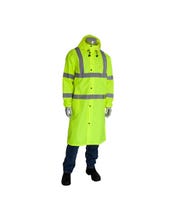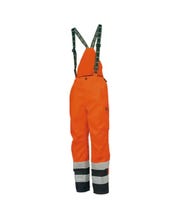Rainwear

Filters >>
Narrow it Down!
Filters >>
Narrow it Down!
-
Helly Hansen Mandal Waterproof PVC Coated Polyester Bib 70529-480Select Size Multiple sizes available. Must select size to add item to the cart!SKU: HH-70529-480-OPTAs low as$2964
-
PIP Safety CLC 3-Piece Heavyweight PVC Rain Suit Jacket & Bibs R101Select Size Multiple sizes available. Must select size to add item to the cart!SKU: CLCR101-OPTAs low as$1609
-
Helly Hansen Mandal Jacket Light Yellow PVC Coated Polyester Waterproof - 70129-310-OPTSelect Size Multiple sizes available. Must select size to add item to the cart!SKU: HH-70129-310-OPTAs low as$2964
-
Helly Hansen Mandal Waterproof PVC Coated Polyester Jacket 70129-480Select Size Multiple sizes available. Must select size to add item to the cart!SKU: HH-70129-480-OPTAs low as$5200
-
PIP Falcon Base 35 Jacket & Bibs 3-Piece Rainsuit .35MM 201-354Select Size Multiple sizes available. Must select size to add item to the cart!SKU: PIP201-350-OPTAs low as$506
-
PIP Falcon VIZ ANSI Type R Class 3 Two-Piece Rain Suit SetSelect Size Multiple sizes available. Must select size to add item to the cart!SKU: PIP353-1000LY-OPTAs low as$3559
-
Helly Hansen Mandal Bib Light Yellow PVC Coated Polyester Waterproof - 70529-310-OPTSelect Size Multiple sizes available. Must select size to add item to the cart!SKU: HH-70529-310-OPTAs low as$2964
-
PIP Falcon Base 35 Two-Piece 48 Raincoat .35MM 201-300"Select Size Multiple sizes available. Must select size to add item to the cart!SKU: PIP201-300-OPTAs low as$389
-
PIP Falcon VIZ ANSI Type R Class 3 48 Rain Trench CoatSelect Size Multiple sizes available. Must select size to add item to the cart!SKU: PIP353-1048-LY-OPTAs low as$3009
-
Helly Hansen Waterproof Potsdam Jacket Class 3 Orange/Charcoal 71389-269Select Size Multiple sizes available. Must select size to add item to the cart!SKU: HH-71389-269-OPTAs low as$17000
-
Helly Hansen Potsdam Waterproof Pant 71489-369Select Size Multiple sizes available. Must select size to add item to the cart!SKU: HH-71489-369-OPTAs low as$15000
-
DriFire ARC H20 FR Rain Jacket R30RQL06Backorder This item is currently on order and have been notified it will take to receive than normal. Placing an order will secure your place in line and we would typically anticipate 5-15+ days delay for Back Ordered items to get fulfilled but longer waits certainly happen all the time on popular items. Please do not hesitate to call our sales team with questions or stock status.SKU: NSA-R30RQL06-OPTAs low as$29779
-
PIP Safety CLC 2-Piece Heavyweight PVC Rain Suit Trench Coat R105Select Size Multiple sizes available. Must select size to add item to the cart!SKU: CLCR105-OPTAs low as$1429
-
PIP VizAR ARC / FR ANSI Type R Class 3 Heavy Duty Waterproof Breathable JacketSelect Size Multiple sizes available. Must select size to add item to the cart!SKU: PIP355-2500AR-LY-OPTAs low as$8315
-
Helly Hansen Potsdam Waterproof Class 3 Jacket 71389-369Select Size Multiple sizes available. Must select size to add item to the cart!SKU: HH-71389-369-OPTAs low as$17000
-
Helly Hansen Manchester Rain Jacket 70127-990Select Size Multiple sizes available. Must select size to add item to the cart!SKU: HH-70127-990-OPTAs low as$10000
-
Helly Hansen Potsdam Pant Orange/Charcoal Waterproof - 71489-269-OPTSelect Size Multiple sizes available. Must select size to add item to the cart!SKU: HH-71489-269-OPTAs low as$15000
-
Helly Hansen Potsdam Liner Jacket Class 3 Orange - 78074-260-OPTSelect Size Multiple sizes available. Must select size to add item to the cart!SKU: HH-78074-260-OPTAs low as$15500
-
PIP Safety ANSI Class E Insulated Bib Pants W/ Removeable Bib & SuspendersSelect Size Multiple sizes available. Must select size to add item to the cart!SKU: PIP318-1775-LY-OPTAs low as$4809
-
PIP Three-Piece 0.35mm PVC Over Polyester Rainsuit 4035Backorder This item is currently on order and have been notified it will take to receive than normal. Placing an order will secure your place in line and we would typically anticipate 5-15+ days delay for Back Ordered items to get fulfilled but longer waits certainly happen all the time on popular items. Please do not hesitate to call our sales team with questions or stock status.SKU: PIP4035-OPTAs low as$629
-
Helly Hansen Alta Rain Bib Orange Waterproof - 70570-260-OPTSelect Size Multiple sizes available. Must select size to add item to the cart!SKU: HH-70570-260-OPTAs low as$11000
-
Helly Hansen Potsdam Class 3 Liner Jacket 78074-360Select Size Multiple sizes available. Must select size to add item to the cart!SKU: HH-78074-360-OPTAs low as$15500
Construction sites rarely stop for rain, so having reliable rainwear is essential for worker safety and productivity. But with various options available, selecting the best rain gear depends on the specific work environment and potential hazards. Here's a breakdown of two common types of rainwear and their ideal applications:
Rain Jackets and Pants: These two-piece sets offer a versatile and customizable option for most wet weather conditions. Rain jackets are typically made from waterproof materials like nylon or polyester with a polyurethane (PU) coating or a waterproof membrane like Gore-Tex®. Features like a hood with a visor, adjustable cuffs and hem, and storm flaps over zippers help to keep rain out. Rain pants often incorporate similar waterproof materials and might feature elasticated cuffs or stirrups to prevent water from seeping in at the ankles. This two-piece rainwear is ideal for general rain protection and offers good freedom of movement for various tasks.
Rain Suits: These one-piece coveralls provide the most comprehensive protection from rain. Made from waterproof materials like PVC or heavy-duty nylon with a PU coating, rain suits enclose the entire torso and legs. They typically feature an attached hood, a zippered front closure with a storm flap, and elasticated cuffs and ankles for a watertight seal. Rain suits are ideal for heavy downpours, windy conditions, or jobsites with puddles or standing water. However, they can trap heat and offer less breathability compared to rain jacket and pant combinations.
Applications and Considerations:
Beyond the type of rainwear, consider additional features that enhance safety and comfort on the jobsite. High-visibility rainwear with reflective stripes is crucial for low-light conditions or when working near traffic. Breathable rain gear with features like mesh lining or ventilation zippers allows for air circulation and helps prevent overheating during exertion. For tasks requiring good dexterity, look for rainwear with articulated sleeves and knees for improved flexibility. Knee pad pockets are a valuable addition, especially when kneeling is a frequent job requirement.
By understanding the different types of rainwear and their functionalities, construction workers in Ohio can make informed decisions to stay dry, safe, and productive throughout the workday, no matter the weather throws their way.























